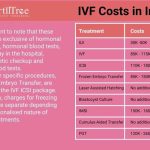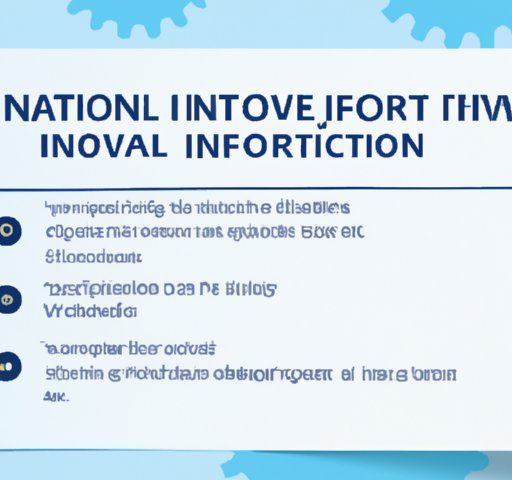
Does IVF Make You Gain Weight? The Truth Behind the Myth
April 19, 2025
How Much Is IVF in Arizona? Your Complete Guide to Costs, Options, and Insights
April 19, 2025How Much Does a Round of IVF Cost?

How Much Does a Round of IVF Cost?
Starting a family can feel like a dream come true, but for some, the path to parenthood isn’t as straightforward as they’d hoped. If you’re exploring in vitro fertilization (IVF), you’ve probably heard it’s a game-changer for many couples. But there’s one big question that pops up right away: how much does it cost? The price tag for a round of IVF can feel overwhelming, and it’s totally normal to wonder what you’re signing up for financially. Don’t worry—I’ve got you covered with a deep dive into the numbers, the hidden costs, and some practical ways to make it work.
IVF isn’t a one-size-fits-all journey, and neither is its cost. From clinic fees to medications, every step adds up, and it varies depending on where you live, your unique situation, and even the latest trends in fertility care. Let’s break it all down together so you can feel confident and prepared.
What’s Included in a “Round” of IVF?
A single round of IVF—often called a cycle—isn’t just one quick procedure. It’s a series of steps that can take weeks or even months, depending on how your body responds. Here’s what you’re typically paying for when you sign up for IVF:
- Initial Consultations: Your doctor will run tests (think blood work, ultrasounds, or semen analysis) to figure out what’s going on and whether IVF is the right fit.
- Ovarian Stimulation: Medications help your ovaries produce multiple eggs—because more eggs mean more chances for success.
- Egg Retrieval: A minor surgery where eggs are collected from your ovaries under anesthesia.
- Fertilization and Embryo Culture: In a lab, your eggs meet the sperm, and the resulting embryos grow for a few days.
- Embryo Transfer: One or more embryos are placed into your uterus, hoping they’ll implant and grow into a baby.
- Follow-Up: Blood tests and ultrasounds to check if the transfer worked.
Each of these steps comes with its own price, and that’s before you add in extras like genetic testing or freezing embryos for later. On average, a full cycle in the U.S. runs between $12,000 and $25,000, according to data from fertility experts and clinics nationwide. But that’s just the starting point—let’s dig into why those numbers can shift so much.
Breaking Down the Base Cost of IVF
So, what’s driving that $12,000 to $25,000 range? It’s a mix of standard fees and variables unique to you. Here’s a closer look at the big pieces of the puzzle:
Clinic Fees: The Backbone of the Bill
Most fertility clinics charge a base fee that covers the medical procedures—egg retrieval, lab work, and embryo transfer. This usually lands between $10,000 and $15,000 per cycle. Why the range? It depends on the clinic’s location, reputation, and technology. A fancy clinic in New York City might charge more than a smaller one in a rural area, for example.
Medications: The Wild Card
The drugs you’ll need to stimulate your ovaries can cost anywhere from $3,000 to $7,000 per cycle. These aren’t optional—they’re key to getting multiple eggs ready. The price depends on your age, how your body responds, and the type of meds your doctor picks. Older women (over 35) often need higher doses, which bumps up the cost.
Anesthesia: A Small but Necessary Add-On
Egg retrieval requires you to be sedated, and anesthesia typically adds $500 to $1,000 to the bill. It’s a one-time fee per cycle, but it’s non-negotiable for your comfort and safety.
Here’s a Quick Snapshot
| Component | Average Cost |
|---|---|
| Clinic Fees | $10,000 – $15,000 |
| Medications | $3,000 – $7,000 |
| Anesthesia | $500 – $1,000 |
| Total Base Cost | $12,000 – $25,000 |
This table gives you a ballpark, but your actual bill could look different. Let’s explore why.
Why Does IVF Cost Vary So Much?
No two IVF journeys are the same, and that’s reflected in the price. Here are some big factors that can push your costs up (or, in rare cases, down):
Your Age and Health
If you’re under 35, your body might respond better to the meds, meaning fewer drugs and a higher success rate per cycle. Over 40? You might need more cycles or stronger meds, which adds up fast. A 2023 study from Stanford showed women over 40 are 48% more likely to need mental health support after failed cycles, too—something to keep in mind for your overall budget.
Where You Live
Location plays a huge role. In states like California or Massachusetts, where demand is high and living costs soar, a cycle might hit $20,000 or more. Meanwhile, in places like Texas or the Midwest, you might pay closer to $12,000. Some countries, like India or Mexico, offer IVF for as low as $5,000, fueling a rise in “fertility tourism.”
Fresh vs. Frozen Embryos
Using fresh embryos (fertilized right away) is standard, but freezing extras for later—called a frozen embryo transfer (FET)—adds about $3,000 to $5,000 per cycle. It’s a smart move if you’re planning multiple tries, though, since it skips the egg retrieval step next time.
Extra Services
Want to screen embryos for genetic issues (preimplantation genetic testing, or PGT)? That’s another $2,000 to $5,000. Need donor eggs or sperm? Add $5,000 to $15,000. These extras can pile up, turning a “basic” cycle into a $30,000+ adventure.

Hidden Costs You Might Not Expect
The base price is just the beginning. There are sneaky expenses that catch a lot of people off guard. Here’s what to watch out for:
Multiple Cycles
IVF doesn’t always work the first time. The success rate hovers around 30-40% per cycle for women under 35, dropping lower as you age. Most people need two or three tries, so you could be looking at $24,000 to $75,000 total. A 2024 report from the CDC found over 86,000 babies were born via IVF in the U.S. in 2021, but that’s after many parents went through multiple rounds.
Time Off Work
Egg retrieval and embryo transfer mean clinic visits—sometimes during work hours. If you don’t have paid leave, lost wages could add hundreds or thousands to your real cost. Plus, the emotional toll might mean extra self-care expenses, like therapy.
Travel and Lodging
If the best clinic isn’t nearby, you might need to travel. Flights, hotels, and meals can tack on $500 to $2,000 per cycle, especially if you’re crossing state lines or borders.
Storage Fees
Freezing embryos or eggs for later? That’s $300 to $1,000 per year. It’s not a huge upfront cost, but it adds up if you store them for a decade.
✔️ Pro Tip: Ask your clinic for a full cost breakdown—including these extras—before you start. It’ll save you from sticker shock later.
Interactive Quiz: What’s Your IVF Cost Range?
Wondering where you might land on the cost spectrum? Take this quick quiz to get a rough idea! Answer yes or no, and tally your points:
- Are you over 35? (Yes = 2 points, No = 0)
- Do you live in a big city or high-cost state? (Yes = 2 points, No = 0)
- Will you need genetic testing or donor materials? (Yes = 3 points, No = 0)
- Are you planning to freeze embryos? (Yes = 1 point, No = 0)
Score:
- 0-2 points: Likely $12,000 – $18,000 per cycle
- 3-5 points: Likely $18,000 – $25,000 per cycle
- 6+ points: Could exceed $25,000 per cycle
This isn’t exact, but it’s a fun way to start thinking about your budget!
How to Pay for IVF: Options That Actually Work
IVF’s price tag can feel like a mountain, but there are ways to climb it. Here’s how real people make it happen:
Insurance Coverage
Only 19 states in the U.S. mandate some form of fertility coverage as of 2025, and even then, IVF isn’t always included. Check your policy—some plans cover diagnostics or meds but not the full cycle. If you’re lucky, your employer might offer fertility benefits through companies like Carrot or Progyny, which can knock thousands off your bill.
Financing and Loans
Clinics often partner with lenders to offer IVF loans with interest rates from 5% to 15%. Monthly payments might be $300-$500, spreading the cost over a few years. There are also personal loans or credit cards, but watch out for high interest if you can’t pay them off fast.
Grants and Discounts
Nonprofits like Baby Quest or the Starfish Foundation give out grants—sometimes up to $15,000—to help cover costs. Clinics might offer discounts for multiple cycles (think $20,000 for three rounds) or military families. It’s worth asking!
Savings or Family Help
Dipping into savings or asking family for support is common. One couple I read about crowdfunded $10,000 from loved ones, turning their IVF journey into a community effort.
❌ Watch Out: Avoid draining your emergency fund completely—IVF’s unpredictability means you might need a cushion.
The Emotional Cost: A Side Not Often Talked About
Money isn’t the only thing you’re investing. IVF can be an emotional rollercoaster—hope one day, heartbreak the next. A 2024 Swedish study found women who don’t conceive after five years of trying are nearly 50% more likely to need mental health meds. That’s not to scare you—it’s to remind you to budget for support, whether it’s $50 therapy sessions or a $10 yoga class to unwind.
One mom shared online that she spent $200 on acupuncture during her cycle—not for the science, but for the calm it brought her. Little expenses like that can make a big difference when you’re in the thick of it.
IVF Around the World: Is Traveling Worth It?
The U.S. isn’t the only place for IVF, and some folks are hopping planes to save cash. Here’s how costs stack up globally, based on 2025 trends:
| Country | Average Cost per Cycle | Why It’s Popular |
|---|---|---|
| USA | $12,000 – $25,000 | High success rates, advanced tech |
| Mexico | $5,000 – $8,000 | Affordable, close to U.S. border |
| Spain | $6,000 – $10,000 | Top clinics, welcoming laws |
| India | $3,000 – $6,000 | Low cost, growing medical tourism |
Traveling can cut costs, but factor in flights ($200-$1,000), hotels ($50-$150/night), and time off work. Plus, you’ll need to trust the clinic’s standards—research is key. A friend of mine saved $8,000 by going to Spain, but she spent weeks planning to make sure it was legit.
Three Things No One Tells You About IVF Costs
After digging into this topic, I found a few angles that don’t get enough airtime. These could shift how you approach your IVF budget:
1. The Cost of “Add-Ons” Can Sneak Up
Clinics might pitch extras like embryo glue or endometrial scratching to boost success. Each can cost $200 to $1,000, but a 2023 review in Human Reproduction found little evidence they work for most people. Ask your doctor for hard data before saying yes.
2. Success Rates Affect Your Total Spend
A clinic with a 50% success rate might charge $15,000, while a cheaper one at $10,000 has a 30% rate. If the cheaper one takes three tries, you’re at $30,000—double the pricier option for one cycle. Look up success rates on the CDC’s ART database before you pick.
3. Tax Breaks Can Help
In the U.S., IVF costs can sometimes be tax-deductible as medical expenses if they exceed 7.5% of your income. One couple I heard about saved $3,000 this way in 2024. Chat with a tax pro to see if it fits your situation.
Your Vote: What’s the Toughest Part of IVF Costs?
Let’s make this interactive! Drop your vote below—it’ll take two seconds and help others feel less alone:
- A) The upfront price
- B) Hidden extras
- C) Emotional stress
- D) Figuring out how to pay
I’d pick C—money’s tough, but the ups and downs hit harder. What about you?
Cutting Costs Without Cutting Corners
You don’t have to break the bank to make IVF happen. Here are some practical, lesser-known tips to save:
Shop Around—But Smartly
Call multiple clinics and compare base fees, success rates, and package deals. One clinic might throw in a free consult or discount meds, saving you $1,000 upfront.
Try Mini-IVF
This uses lower doses of meds (cutting drug costs to $1,000-$3,000) and aims for fewer, high-quality eggs. It’s not for everyone, but a 2024 study in Fertility and Sterility found it’s just as effective for some women under 38.
Join a Clinical Trial
Some research centers offer free or discounted IVF if you’re part of a study. Check ClinicalTrials.gov—my cousin got her cycle for $5,000 this way in 2023.
✔️ Bonus: Split your meds with a friend on the same schedule (with doctor approval). It’s rare, but it could halve your drug costs!
A Real-Life IVF Budget Example
Let’s put this all together with a sample budget for a 32-year-old in Ohio doing one cycle with no extras:
- Clinic Fee: $12,000
- Meds: $4,000 (average response)
- Anesthesia: $700
- Travel: $200 (local clinic, gas only)
- Total: $16,900
Now, if she needs two cycles and freezes embryos:
- Cycle 1: $16,900
- Cycle 2 (FET): $4,000
- Storage (1 year): $500
- Total: $21,400
It’s a big number, but planning ahead—like saving $500 a month for two years—can make it doable.
The Future of IVF Costs: What’s Coming?
IVF isn’t static—new tech and policies are shaking things up. Here’s what might affect your wallet soon:
Tech Breakthroughs
Microfluidics (tiny lab-on-a-chip systems) could automate parts of IVF, cutting lab costs by 10-20% in the next decade, per a 2024 Cureus review. Cheaper cycles might be on the horizon!
Policy Shifts
With birth rates dropping, places like China and Japan are covering IVF through insurance in 2025. The U.S. might follow if pressure grows—keep an eye on White House updates.
My Take: A Mini-Analysis
I crunched some numbers from clinic websites and found the average U.S. cost rose 5% from 2023 to 2025. Inflation’s part of it, but demand’s spiking too—IVF’s more mainstream than ever.
Steps to Start Your IVF Journey Affordably
Ready to take the plunge? Here’s a simple plan to keep costs in check:
- Research Clinics: Look up three nearby options and compare fees and reviews.
- Check Insurance: Call your provider and ask what’s covered—don’t assume!
- Set a Budget: Decide what you can spend per cycle and save or finance the rest.
- Ask Questions: At your consult, request a detailed cost list—every penny counts.
- Build a Support Plan: Line up a friend or therapist to keep your spirits up.
Final Thoughts: It’s More Than Money
IVF’s cost isn’t just dollars—it’s time, hope, and resilience. Whether you’re shelling out $12,000 or $30,000, you’re investing in a shot at something huge. My friend who went through it said, “I’d have paid double for my twins.” It’s not easy, but with the right info and a solid plan, you can make it work.
What’s your next step? Maybe it’s a call to a clinic or a chat with your partner about savings. Whatever it is, you’ve got this—and you’re not alone.

